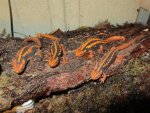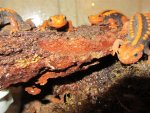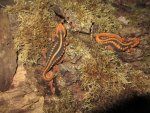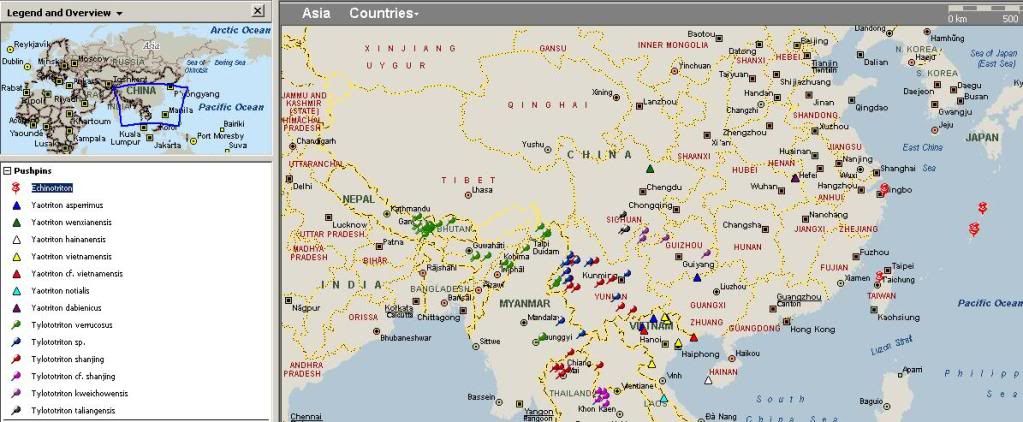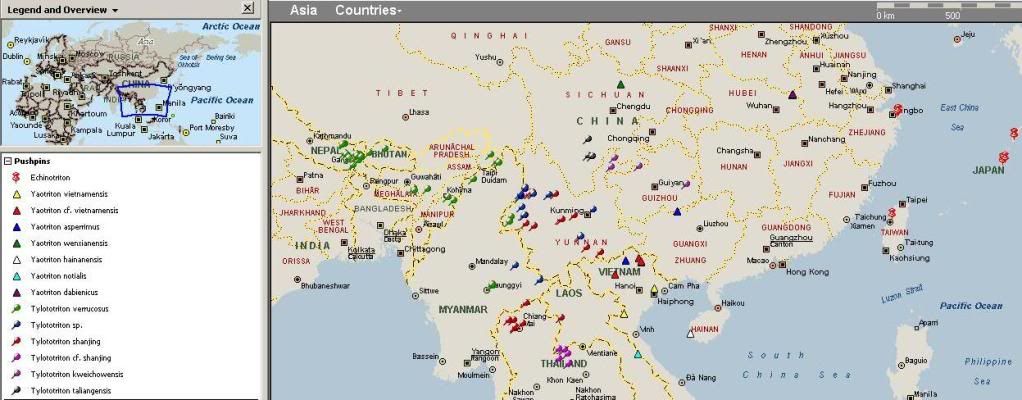It looks like a juvenile, but fairly distinctively
T.verrucosus.
The problem with verrucosus is that they have various distinctive populations which may or may not actually represent different species, it´s not so clear. That means that there is great variation in their habits, so maybe your animal is from a population that spends little time in the water (it could be other causes, though).
I think much of the available information on this subject is wrong. The so-called shanjing-like "variants" appear to be
T.shanjing. Actual
T.verrucosus is not all that variable, either genetically or morphologically, from Taungyi Myanmar to Nepal. Specimens with significant orange have essentially identical morphology and pattern and are only reported thus far from Yunnan and Thailand. Biogeographically, the latter should be a single species also occuring in western Laos and eastern Myanmar. A significantly different, though similar form, occurs in northeastern Thailand and probably adjacent Laos.
T.verrucosus appears to only be seasonally aquatic. In largely unforested parts of its range and where it gets buried in snow for two months, it may be that their aquatic period is extended - but still seasonal. That's based on what information I've been able to dig up on populations studied in Nepal and Darjeeling. I've found a few photos of animals from Nepal, Bhutan, and Darjeeling, and they're all solid brown in color with some variation in tint but without dorsal orange, while Stuart has identified animals from Nepal and some animals from Myanmar by color, morphology, and genetics as also this species. There MAY be more than one species involved in this, but it seems unlikely, and they are all brown regardless.
The green pins are animals identified as
T.verrucosus, probably correctly. Specimens from Taungyi and Nepal are genetically closely related and resemble the brown type specimens from western Yunnan.
Red pins are populations recorded as
T.shanjing, or which are clearly identifiable as such from published information.
Blue pins are specimens recorded as
T.verrucosus, which are either
T.shanjing and haven't been re-identified, or localities which could be either.
The fuschia pins are a distinct population resembling
T.shanjing, but easily distinguished by more slender build, black limbs, and black tail.
Even without the benefit of topographic or vegetation layers on the map, it's apparent that it makes more sense for a western
T.verrucosus, a somewhat variable and orange-marked
T.shanjing with a central range, and a southeastern new species. The status quo makes far less sense - a wide-ranging
T.verrucosus with at least three different color forms, two of which are both closer in geography and morphology to
T.shanjing than to type
T.verrucosus. The third resembles type specimens in color and only occurs west of
T.shanjing and west of the type locality of
T.verrucosus. East of the type locality, the only plain brown animals identified are
T.vietnamensis and
T.cf.vietnamensis. The only logical conclusion is that if it ain't brown, it ain't verrucosus!



